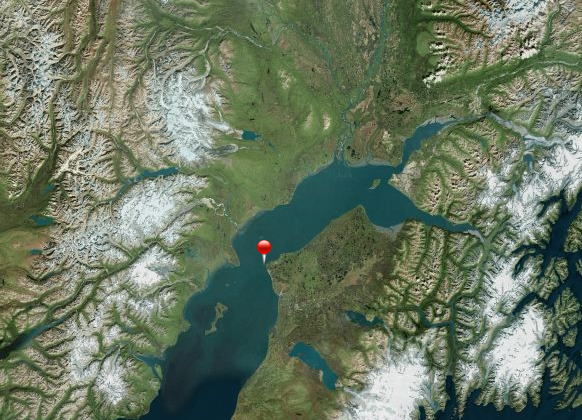
State regulators have given preliminary approval to Hilcorp’s plan to monitor the environmental impacts of the gas leak in Cook Inlet.
Hilcorp, the biggest oil and gas producer in the Inlet, owns a gas line that’s now leaking as much as 215,000 cubic feet per day. The leak is coming from an underwater pipeline that fuels offshore oil platforms and has been ongoing since December.
Heavy ice in Cook Inlet means its currently too dangerous to send divers to fix the leak.
Geoff Merrell of the Alaska Department of Environmental Conservation said the monitoring will help the state learn how big of a risk the leak actually poses to the environment.
“On the one hand, there’s people with an environmental and wildlife interest saying, you know, ‘the risks to wildlife are too great, you have to shut the pipeline in,’” Merrell said. “And a different viewpoint is that of Hilcorp, which is saying, ‘no, actually, the risks are quite small, the impacts are quite small.’”
A federal agency, the Pipeline and Hazardous Materials Safety Administration, would make the final call on whether to shut down the line.
Hilcorp confirmed shutting down the gas line could forever halt oil production from the affected platforms. The company also said shutting it down could result in an oil spill because the line used to carry oil. Environmental groups dispute that claim.
Meanwhile, Merrell said collecting water quality data near the gas leak is especially important.
“We know that methane displaces oxygen in the water column,” Merrell said. She said monitoring will help explain “to what extent is that occurring and to what extent is that occurrence impacting or potentially impacting fish and other aquatic species in the water column.”
Hilcorp also will monitor for air quality, the presence of fish and wildlife and underwater noise caused by the leak.
According to Hilcorp, collecting this data will help explain if the leak is affecting Cook Inlet beluga whales, which are listed as endangered. The leak is happening within the whales’ critical habitat.
Neither Hilcorp nor the state could predict when ice conditions will allow divers to fix the leak.
Elizabeth Harball is a reporter with Alaska's Energy Desk, covering Alaska’s oil and gas industry and environmental policy. She is a contributor to the Energy Desk’s Midnight Oil podcast series. Before moving to Alaska in 2016, Harball worked at E&E News in Washington, D.C., where she covered federal and state climate change policy. Originally from Kalispell, Montana, Harball is a graduate of Columbia University Graduate School of Journalism.




